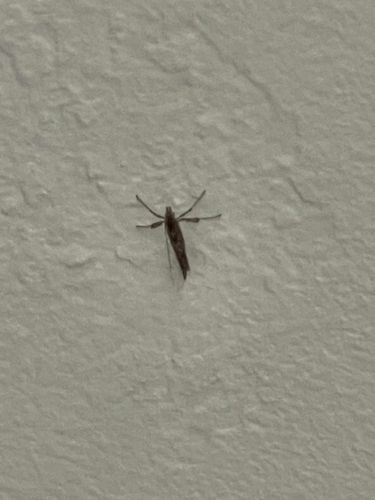Non-biting Midge
Scientific Name: Chironomidae
Order & Family: Diptera (True Flies), Chironomidae (Non-biting Midges)
Size: Typically 1-10 mm in length, though some species can be larger.

Natural Habitat
Adults are commonly found near bodies of water (lakes, ponds, rivers, streams) where their larvae develop. They are attracted to lights and can often be seen resting on walls or ceilings indoors near lights at night.
Diet & Feeding
Adult non-biting midges typically do not feed or feed on nectar/plant fluids. Their primary role as adults is reproduction. Larvae typically feed on organic detritus, algae, and small aquatic organisms.
Behavior Patterns
Adults are relatively short-lived (a few days to a week) and are primarily focused on mating and egg-laying. They often form large swarms, especially at dusk, near water bodies. Larvae are aquatic and are an important part of aquatic food webs, often found in tubes they construct in sediment.
Risks & Benefits
Non-biting midges pose no direct risk to humans as they do not bite or transmit diseases. They can be a nuisance when large swarms occur, especially around lights. Ecologically, their larvae are extremely important as a food source for fish, birds, and other aquatic invertebrates, and they play a role in nutrient cycling in aquatic ecosystems. Their presence can also be an indicator of good water quality for some species (although some thrive in polluted waters).
Identified on: 9/17/2025